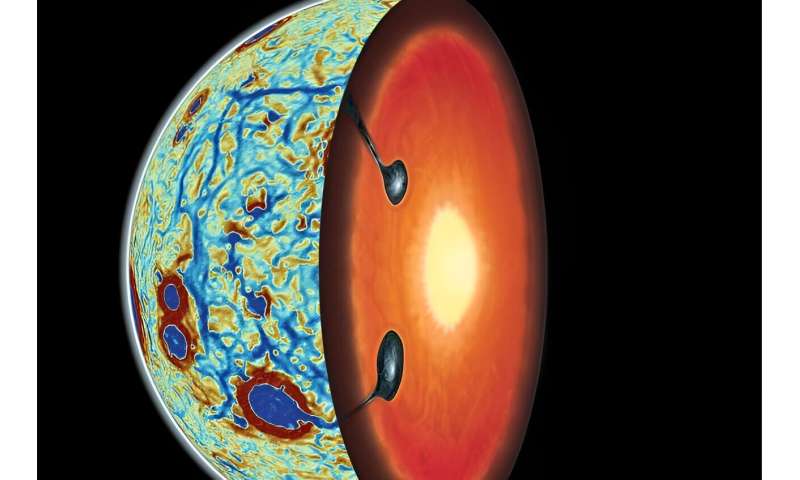Best of Last Week—gravity free technology, recreating the Holodeck, why the moon is lopsided

It was a good week for physics research as a team at the Quantum Machines Unit at the Okinawa Institute of Science and Technology developed a new material with the potential to unlock gravity-free technology. Their device is a floating platform in a vacuum that involves the use of magnets and graphite. Also, a team of physicists working on the BESIII collaboration observed an anomalous line shape around the ppbar mass threshold in the J/ψ→γ3(π+π-) decay, representing evidence of a new subatomic particle. And a team at the University of California, Riverside, solved a puzzle regarding an ancient galaxy found by the Webb telescope—the galaxy JWST-ER1g acts as a lens, bending light from a faraway source, resulting in the observed ring.
In technology news, a team of engineers at the University of Florida demonstrated a new 3D-printing method that could make printing objects more affordable and eco-friendly. And a team at the University of Pennsylvania recreated Star Trek's holodeck using ChatGPT and video game assets—called Holodeck, the system generates interactive virtual 3D environments. A team of solar energy engineers at Lehigh University developed a new quantum material that promises up to 190% quantum efficiency in solar cells. And a team at Osaka Metropolitan University developed a process that could bring all-solid-state sodium batteries closer to practical use.
In other news, a team of medical researchers at the University of Georgia Center for Food Safety in the College of Agricultural and Environmental Sciences found evidence that drinking certain types of teas could help the immune system fight off COVID-19—the ingredients of some teas were found to inactivate the SARS-CoV-2 virus in saliva up to 99.9%. Also, a team of researchers at the University of Arizona solved a longstanding mystery surrounding the lopsided nature of the moon's geology. After the moon literally turned itself inside out, ilmenite materials migrated to its near side and sank into the interior in sheet-like cascades, leaving behind remains that caused anomalies in the moon's gravity field.
© 2024 Science X Network